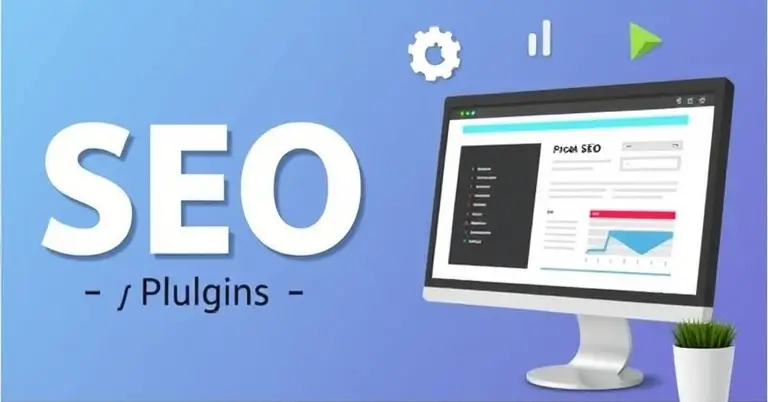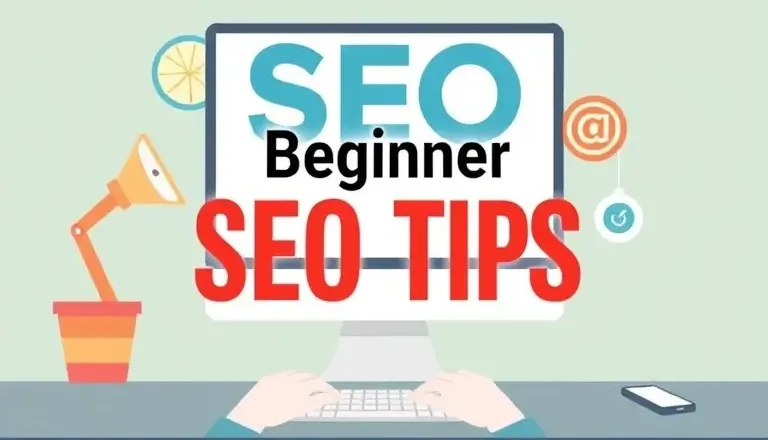SEO Basics for Blog Traffic: 5 Proven Strategies to Boost Your Readers

Are you struggling to get eyes on SEO basics for blog traffic? You’re not alone. Many bloggers pour their hearts into creating amazing content, yet their posts remain hidden in the depths of search engine results. The secret weapon you might be overlooking?.
Search Engine Optimization isn’t just for big businesses or tech experts. It’s a powerful tool that can transform your blog’s visibility and attract the right readers to your content. Think of SEO as your blog’s GPS system – it guides potential readers straight to your doorstep.
Here’s what makes SEO basics truly remarkable for your blog:
- They help search engines understand and rank your content
- They connect you with readers actively searching for your topics
- They build lasting organic traffic without constant promotion
- They work for you 24/7, bringing consistent results
The best part? You don’t need complex technical knowledge or expensive tools to start seeing results. Simple SEO techniques can create surprising impacts on your blog traffic when applied correctly.
Table of Contents
Ready to discover how basic SEO strategies can revolutionize your blog’s reach? Let’s explore five unexpected ways these fundamental practices can boost your visibility and attract more engaged readers to your content.
1. Uncovering Hidden Keywords
Identifying relevant keywords is key to generating traffic for your blog. Think of keywords as treasure maps that guide potential readers directly to your content. The right keywords can bring in a lot of traffic, while choosing the wrong ones may leave your valuable content unseen.
Essential Keyword Research Tools:
- Google Search Console – Shows you the exact search terms bringing visitors to your site
- Ubersuggest – Offers keyword suggestions, search volumes, and competition metrics
- Google Keyword Planner – Provides detailed search volume data and variations of keywords
- AnswerThePublic – Reveals question-based searches in your niche.
Long-tail Keywords: Your Secret Weapon
Long-tail keywords are specific phrases that contain three or more words. These keywords attract highly targeted traffic with a clear intention to make a purchase. For example, a food blogger might target “best chocolate chip cookies” (head term) but could achieve better results with “soft chewy chocolate chip cookies recipe” (long-tail).
Smart Keyword Analysis Strategy:
- Search Volume: Aim for keywords with 100-1,000 monthly searches for the best balance
- Competition Level: Look for keywords with low to medium competition scores
- User Intent: Match keywords to the type of content you have (informational, commercial, transactional)
- Relevance: Make sure the selected keywords align with your blog’s topic and audience needs
Practical Implementation Tips:
Search Volume + Competition + Intent = Keyword Value
- Study the top-ranking content of your competitors
- Check Google’s “People Also Ask” section for related queries
- Use Google’s autocomplete feature to discover natural variations in searches
- Keep an eye on trending topics in your niche for timely keyword opportunities
Location-based Targeting
Add geographic modifiers to capture local search intent:
- “vegan restaurants downtown Chicago”
- “best hiking trails Seattle”
- “NYC fashion week street style”
The key is to find a balance between search volume and competition levels. Often, a keyword with 500 monthly searches and low competition can bring in more traffic than a high-volume keyword where it will be difficult for you to rank.
2. Crafting Compelling On-Page Elements
Your blog’s on-page elements serve as digital billboards in search results. These elements determine whether users click through to your content or scroll past it.
Title Tags: Your First Impression
Title tags act as headlines in search results, making them crucial for attracting clicks. Create titles that:
- Include your target keyword within the first 60 characters
- Use power words like “essential,” “proven,” or “ultimate”
- Add numbers or years to increase relevancy
- Keep length between 50-60 characters to avoid truncation
Meta Descriptions That Convert
Meta descriptions are your 160-character sales pitch. A well-crafted meta description can boost your click-through rate (CTR) by:
- Incorporating primary and secondary keywords naturally
- Including a clear call-to-action
- Highlighting unique value propositions
- Using active voice and engaging language
Content That Matches User Intent
High-quality content goes beyond keyword placement. Your content should:
- Answer specific questions your audience is asking
- Provide actionable insights and solutions
- Include relevant examples and case studies
- Break down complex topics into digestible sections
- Use headers (H2, H3) to organize information logically
URL Structure Best Practices
Clear URL structures help users and search engines understand your content:
- Keep URLs short and descriptive
- Use hyphens to separate words
- Include your target keyword
- Remove unnecessary words (a, the, and)
- Avoid special characters or numbers
Image Optimization
Images play a vital role in on-page SEO:
- Use descriptive file names
- Add alt text with relevant keywords
- Compress images without sacrificing quality
- Choose appropriate file formats (JPEG for photos, PNG for graphics)
By implementing these on-page elements strategically, you create a strong foundation for search visibility. Each element works together to signal relevance to both search engines and users, increasing your chances of ranking higher in search results.
3. Technical SEO as a Foundation for Success

Technical SEO is the foundation of your blog’s search engine performance. Search engines prioritize websites that provide seamless user experiences through strong technical structures.
Site Speed Optimization
A fast-loading blog keeps both visitors and search engines happy. Here’s how to improve your site speed:
- Enable browser caching to store static files
- Compress and optimize images before uploading
- Minify CSS, JavaScript, and HTML files
- Use a content delivery network (CDN)
- Choose a reliable hosting provider
Your blog should load within 2-3 seconds. Each additional second of loading time increases bounce rates by 32%.
Mobile-First Approach
With 60% of searches now happening on mobile devices, mobile optimization isn’t optional. Google’s mobile-first indexing means your blog must perform flawlessly on smartphones and tablets.
Key mobile optimization elements include:
- Responsive design that adapts to screen sizes
- Touch-friendly navigation
- Readable font sizes (minimum 16px)
- Adequate spacing between clickable elements
- No horizontal scrolling required
Schema Markup Implementation
Schema markup helps search engines understand your content context. This structured data can increase click-through rates by creating rich snippets in search results.
Popular schema types for blogs:
- Article
- BlogPosting
- Author
- FAQ
- HowTo
- Review
Technical Health Checks
Regular technical audits ensure your blog maintains peak performance:
- Check for broken links and 404 errors
- Monitor crawl errors in Google Search Console
- Verify XML sitemap accuracy
- Ensure proper robots.txt configuration
- Fix duplicate content issues
SSL Security
HTTPS encryption isn’t just about security – it’s also a ranking factor. Secure blogs build trust with readers and search engines alike. Google Chrome marks non-HTTPS sites as “Not Secure,” potentially driving away visitors.
Core Web Vitals
These metrics measure loading performance, interactivity, and visual stability:
- Largest Contentful Paint (LCP): under 2.5 seconds
- First Input Delay (FID): under 100 milliseconds
4. Building Authority Through Links

Link building is a powerful strategy to boost your blog’s authority in search rankings. Quality backlinks from reputable websites act as trust signals to search engines, indicating your content’s value and reliability.
Strategic Link Building Approaches
- Guest Posting: Create valuable content for respected industry blogs, securing natural backlinks while building relationships with other content creators
- Broken Link Building: Find broken links on relevant websites and offer your content as a replacement
- Resource Page Link Building: Identify resource pages in your niche and pitch your content for inclusion
- Digital PR: Create newsworthy content that attracts natural media coverage and links
Creating Link-Worthy Content
Your content needs to deserve those valuable backlinks. Here’s what works:
- Original research and data
- Expert interviews
- Comprehensive guides
- Infographics and visual assets
- Industry surveys and reports
Internal Linking Strategy
Internal links create a strong site architecture and distribute authority across your blog. Here’s how to optimize them:
- Link from high-authority pages to boost newer content
- Use descriptive anchor text that includes target keywords
- Create topic clusters by linking related articles
- Place links naturally within the content’s context
- Maintain a flat site structure with content no more than 3 clicks from the homepage
Link Quality Metrics
Not all links carry equal weight. Focus on these qualities:
- Domain authority of linking sites
- Relevance to your blog’s niche
- Traffic potential from referring domains
- Editorial placement within content
- Follow vs. nofollow status
Building Relationships
Link building success often depends on building genuine relationships with:
- Industry influencers
- Complementary businesses
- Media contacts
- Fellow bloggers
- Professional associations
Remember to track your backlink profile using tools like Ahrefs or Moz to identify toxic links and maintain a healthy link profile. Regular link audits help ensure your authority-building efforts stay effective and align with search engine guidelines.
5. Prioritizing User Experience (UX)

User experience shapes how visitors interact with your blog – from their first click to their decision to return. Google’s algorithms now factor in UX signals when determining search rankings, making it a crucial element of your SEO strategy.
Visitor Retention Through Smart Design
A well-designed blog keeps readers engaged and reduces bounce rates. Research shows that websites with strong UX design experience:
- 70% higher user retention rates
- 50% lower bounce rates
- 37% increase in page views
Essential UX Elements for Better Rankings
Navigation Structure
- Clear menu hierarchies
- Breadcrumb navigation for deep content
- Search functionality with filters
- Related posts suggestions
Visual Appeal
- Consistent brand colors
- Readable typography (minimum 16px font size)
- Strategic use of white space
- High-quality, optimized images
Content Layout
- Scannable headings and subheadings
- Short paragraphs (3-4 lines max)
- Bullet points for easy digestion
- Clear call-to-action buttons
Ad Placement Strategy
Poor ad placement can drive visitors away and hurt your SEO performance. Follow these guidelines:
- Limit ads above the fold
- Maintain a 30:70 ratio (ads:content)
- Avoid pop-ups during the first 30 seconds
- Use responsive ad formats
Mobile Experience Optimization
With 60% of searches now happening on mobile devices, your blog needs to deliver:
- Touch-friendly navigation
- Fast loading times (under 3 seconds)
- Properly sized buttons and forms
- No horizontal scrolling
Content Accessibility
Make your blog content accessible to all users:
- Add alt text to images
- Use proper heading hierarchy
- Ensure sufficient color contrast
- Include captions for video content
By implementing these UX improvements, you create a user-friendly environment that encourages longer visits and repeat traffic. Search engines recognize these positive user signals, potentially boosting your blog’s rankings in search results.
Conclusion SEO Basics for Blog Traffic
SEO basics have the power to significantly increase your blog’s traffic. The five strategies we discussed – keyword research, on-page optimization, technical foundations, link building, and user experience – form a strong framework for long-term growth.
Start implementing these practices one by one:
- Research and target relevant keywords your audience actively searches for
- Optimize your content with compelling titles, meta descriptions, and clear URLs
- Build a solid technical foundation with fast loading times and mobile optimization
- Develop quality backlinks while creating strategic internal linking structures
- Design an engaging user experience that keeps visitors coming back
Remember: SEO success doesn’t happen overnight. Think of these practices as seeds you plant today for future growth. Each optimization you make compounds over time, gradually building your blog’s authority and visibility in search results.
The key is to be consistent and patient. Track your progress through analytics, adapt your strategies based on data, and stay committed to providing value to your readers. Your dedication to these SEO basics will create a strong foundation for sustained blog traffic growth.
Ready to take action? Choose one strategy from this guide and implement it this week. Small, consistent steps lead to significant improvements in your blog’s search visibility and traffic over time.
FAQs (Frequently Asked Questions)
What is the importance of blog post structure for SEO?
SEO is crucial for blogs as it helps enhance visibility, drive traffic, and improve user engagement. By optimizing content for search engines, bloggers can reach a larger audience and achieve long-term growth.
How can I identify relevant keywords for my blog?
To identify relevant keywords, you can use tools like Google Search Console and Ubersuggest. Conducting keyword research helps uncover hidden opportunities, particularly with long-tail keywords that attract niche traffic by analyzing search volume and competition.
What are some best practices for on-page SEO?
Best practices for on-page SEO include crafting compelling title tags that attract clicks, writing persuasive meta descriptions to improve click-through rates (CTR), ensuring high-quality content that addresses user intent, and creating clear and descriptive URL structures.
Why is technical SEO important for my blog?
Technical SEO serves as the foundation for a successful blog. It ensures that your site is technically sound for search engines, improves site loading speed, guarantees mobile-friendliness for a wider audience, and utilizes schema markup to enhance search visibility.
How can I build authority through links?
Building authority through links involves acquiring backlinks from reputable sites which boosts your blog’s credibility. Effective link-building campaigns and internal linking strategies can enhance navigation and distribute authority within your content.
What role does user experience (UX) play in driving blog traffic?
User experience (UX) significantly influences visitor retention and engagement rates. Key elements of good UX design include intuitive navigation and appealing aesthetics. Avoiding intrusive ads also helps maintain a positive user experience, encouraging visitors to stay longer on your site.







